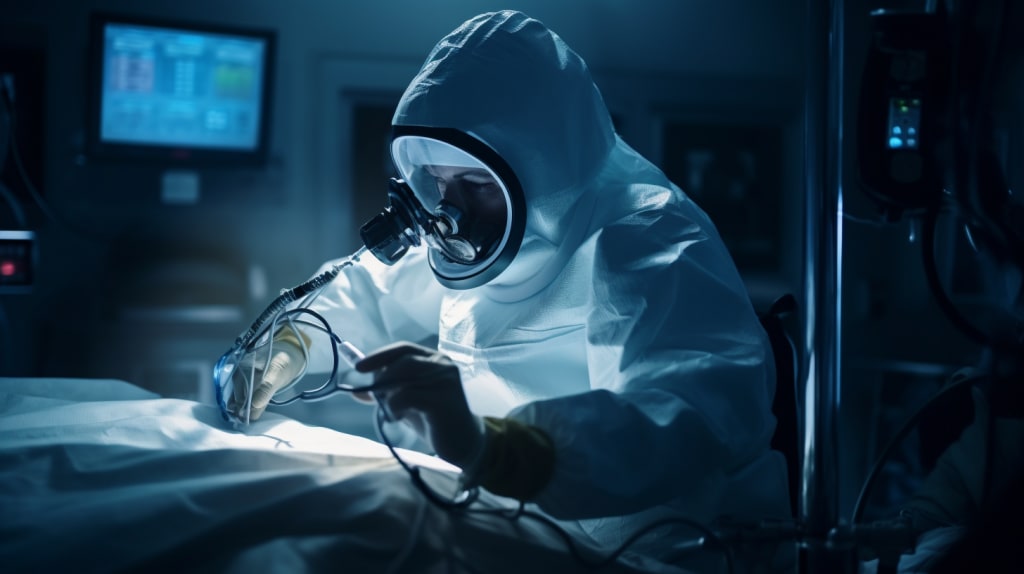
Introduction
Space travel has captivated human imagination for decades, pushing the boundaries of scientific discovery and exploration. Beyond its influence on our understanding of the cosmos, space travel has also had a profound impact on medical technology. The unique challenges posed by space exploration have spurred the development of innovative solutions and technologies that have found invaluable applications in healthcare on Earth. This article explores the ways in which space travel has advanced medical technology, revolutionizing diagnostics, treatment, and patient care.
Telemedicine and Remote Diagnostics
Space missions require astronauts to operate in remote and isolated environments where access to immediate medical care is limited. To overcome this challenge, space agencies developed telemedicine capabilities that allow astronauts to receive medical advice and assistance from healthcare professionals on Earth. This technology has been adapted for use in remote areas on Earth, enabling healthcare providers to deliver remote diagnostics and consultations to patients who lack immediate access to medical facilities. Telemedicine has transformed healthcare delivery, particularly in rural and underserved regions, improving patient outcomes and reducing the need for unnecessary travel.
Miniaturized Medical Devices
Spacecraft have stringent limitations on weight, size, and power consumption. These constraints have driven the development of miniaturized medical devices that are compact, portable, and energy-efficient. For instance, portable ultrasound devices initially designed for space missions are now widely used on Earth for quick and accurate imaging, enabling point-of-care diagnostics in emergency settings, rural clinics, and disaster zones. Similarly, advancements in miniaturized blood analyzers and vital sign monitoring systems have revolutionized patient care, allowing for real-time monitoring and rapid diagnosis at the patient's bedside.
Rehabilitation and Muscle Atrophy Prevention
The microgravity environment of space has presented unique challenges to the health of astronauts, particularly concerning muscle atrophy and bone density loss. To counter these effects, space agencies have developed innovative exercise equipment and rehabilitation techniques that are now being applied to improve patient care on Earth. For example, robotic exoskeletons initially designed for astronauts are now used in physical therapy and rehabilitation for patients with mobility impairments, enabling them to regain strength and mobility. These advancements have transformed the field of rehabilitation medicine, enhancing the quality of life for individuals with neurological disorders and spinal cord injuries.
Water and Air Purification Systems
Space missions require closed-loop life support systems to sustain astronauts in isolated environments. The development of efficient water and air purification systems for spacecraft has paved the way for similar technologies used in healthcare settings on Earth. Water purification systems initially designed for space have been adapted for use in disaster response situations, providing safe drinking water in areas affected by natural calamities or lacking access to clean water sources. Likewise, advanced air filtration systems developed for space exploration have found applications in hospitals, preventing the spread of airborne pathogens and enhancing infection control measures.
Surgical Innovations and Robotics
Performing surgery in space poses unique challenges due to the absence of gravity and the limited availability of resources. To overcome these obstacles, robotic surgical systems have been developed for use in space missions. These robotic platforms allow for precise, minimally invasive procedures and remote surgical capabilities. The advancements in surgical robotics driven by space exploration have revolutionized surgical techniques on Earth, enhancing precision, reducing invasiveness, and enabling remote surgeries. Robotic-assisted surgeries have become increasingly commonplace, allowing for improved patient outcomes, shorter recovery times, and reduced surgical risks.
Radiation Protection and Imaging Technologies
Space travelers are exposed to higher levels of radiation compared to Earth's surface due to the lack of atmospheric protection. Developing effective radiation shielding techniques for astronauts has led to significant advancements in radiation protection, including the development of lightweight and efficient materials that can mitigate radiation exposure. These advancements have been applied in medical imaging technologies, such as computed tomography (CT) scanners, to reduce patient radiation dose while maintaining image quality. Additionally, space-inspired imaging techniques, such as magnetic resonance imaging (MRI), have revolutionized medical diagnostics by providing detailed and non-invasive views of the human body.
Conclusion
The pursuit of space exploration has not only expanded our understanding of the universe but has also propelled advancements in medical technology. The unique challenges encountered in space have fostered innovative solutions and technologies that have revolutionized healthcare on Earth. From telemedicine and miniaturized devices to robotic surgeries and radiation protection, the impact of space travel on medical technology is far-reaching. As space exploration continues to evolve, we can expect further collaborations between space agencies and healthcare professionals, leading to even more remarkable advancements that will benefit patients around the world.
About the Creator
Tatsuki
Space, Quantitative Finance, Crypto, Blockchain, Langurages, etc.
Personal Blog (Japanese): https://www.jinsei-100nenn.com/
AI Art Project: Space Cat AI (on Instagram)
Follow me:






Comments
There are no comments for this story
Be the first to respond and start the conversation.